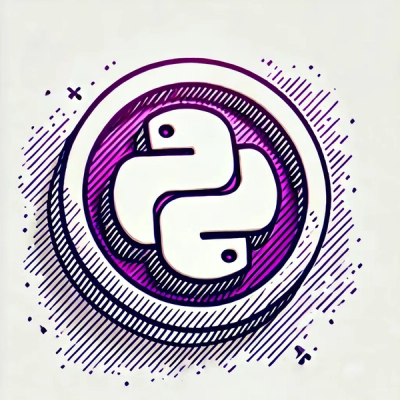
Research
PyPI Package Disguised as Instagram Growth Tool Harvests User Credentials
A deceptive PyPI package posing as an Instagram growth tool collects user credentials and sends them to third-party bot services.
CLI tool to extract text from videos using OCR on macOS.
[!NOTE] Currently, this tool only tested and works on macOS 13 or later.
[!CAUTION] This tool is still in early development stage. Current v0.x releases are not stable and may have breaking changes.
Install this tool using pip:
pip install ocrvid
Usage: ocrvid [OPTIONS] COMMAND [ARGS]...
Options:
--version Show the version and exit.
--help Show this message and exit.
Commands:
detect Run OCR on a single picture, and print the results as json
langs Show supported recognition languages
props Show properties of video file
run Run OCR on a video, and save result as a json file
Use ocr run sub command to run ocr on a video file:
Usage: ocrvid run [OPTIONS] INPUT_VIDEO
Run OCR on a video, and save result as a json file
Options:
-o, --output FILE Path to output json file. By default, if you run
`ocrvid run some/video.mp4` then the output file
will be `./video.json`
-fd, --frames-dir DIRECTORY If passed, then save video frames to this
directory. By default, frames are not saved.
-fs, --frame-step INTEGER Number of frames to skip between each frame to be
processed. By default, 100 which means every 100
frames, 1 frame will be processed.
-bs, --by-second FLOAT If passed, then process 1 frame every N seconds.
This option relies on fps metadata of the video.
-l, --langs TEXT Prefered languages to detect, ordered by
priority. See avalable languages run by `ocrvid
langs`. If not passed, language is auto detected.
--help Show this message and exit.
For example, run against the test video file at tests/video/pexels-eva-elijas.mp4 in this repo:
ocrvid run tests/video/pexels-eva-elijas.mp4
Then pexels-eva-elija.json is generated in the current directory which looks like this:
{
"video_file":"tests/video/pexels-eva-elijas.mp4",
"frames":[
{
"frame_index":0,
"results":[
{
"text":"INSPIRING WORDS",
"confidence":1.0,
"bbox":[
0.17844826551211515,
0.7961793736859821,
0.3419540405273438,
0.10085802570754931
]
},
{
"text":"\"Foar kills more dre",
"confidence":1.0,
"bbox":[
0.0724226723609706,
0.6839455987759758,
0.4780927975972494,
0.14592710683043575
]
},
{
"text":"than failure ever",
"confidence":1.0,
"bbox":[
0.018455287246445035,
0.6549868414269003,
0.45329265594482426,
0.14363905857426462
]
},
{
"text":"IZY KASSEM",
"confidence":0.5,
"bbox":[
-0.015967150208537523,
0.6675747977206025,
0.23065692583719888,
0.08114868486431293
]
},
{
"text":"Entrepreneur",
"confidence":1.0,
"bbox":[
0.01941176222542875,
0.1353812367971159,
0.9058370590209961,
0.26137274083956863
]
}
]
},
...
You can run ocrvid langs to show supported languages to detect.
Results may change depending on running macos version.
On macOS version:
platform.mac_ver()[0]='14.2.1'
Result of ocrvid langs:
en-US
fr-FR
it-IT
de-DE
es-ES
pt-BR
zh-Hans
zh-Hant
yue-Hans
yue-Hant
ko-KR
ja-JP
ru-RU
uk-UA
th-TH
vi-VT
Take a look at yt-dlp.
To contribute to this tool, first checkout the code. Then create a new virtual environment:
cd ocrvid
python -m venv venv
source venv/bin/activate
Now install the dependencies and test dependencies:
pip install -e '.[test]'
To run the tests:
make test
FAQs
CLI tool for OCR-ing video frames on macOS
We found that ocrvid demonstrated a healthy version release cadence and project activity because the last version was released less than a year ago. It has 1 open source maintainer collaborating on the project.
Did you know?

Socket for GitHub automatically highlights issues in each pull request and monitors the health of all your open source dependencies. Discover the contents of your packages and block harmful activity before you install or update your dependencies.

Research
A deceptive PyPI package posing as an Instagram growth tool collects user credentials and sends them to third-party bot services.

Product
Socket now supports pylock.toml, enabling secure, reproducible Python builds with advanced scanning and full alignment with PEP 751's new standard.

Security News
Research
Socket uncovered two npm packages that register hidden HTTP endpoints to delete all files on command.